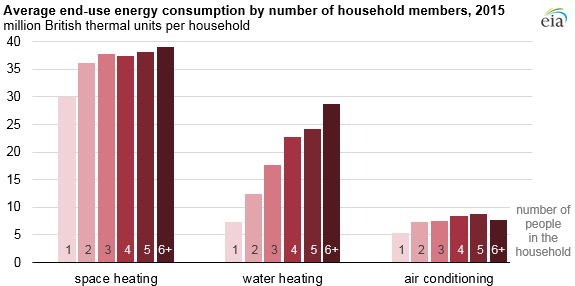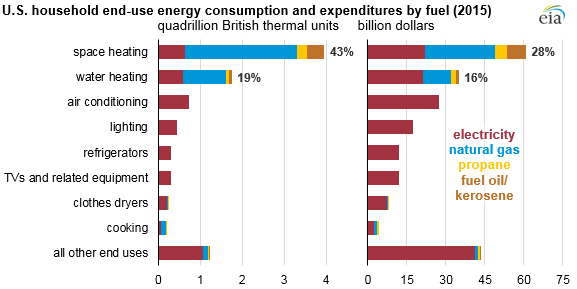
 4
4












Kyrt Ryder wrote:So the average woodstove puts less than 1 ton into the atmosphere... Yet wood stoves seem far more regulated than natural gas.
Idle dreamer








 I doubt she would fit in these graphs and charts
I doubt she would fit in these graphs and charts
Living in Anjou , France,
For the many not for the few
http://www.permies.com/t/80/31583/projects/Permie-Pennies-France#330873




Landon Sunrich wrote:What does a ton of wood look like? In chords?
 2
2




paul wheaton wrote:In preparing for a presentation I gave last week, I worked out the following bits and bobs:
the average american car puts 4 tons of CO2 into the air per year.
the average montana house heated with natural gas puts 8.9 tons of CO2 into the air per year (2.2 cars)
the average montana house heated with electricity puts 29.4 tons of CO2 into the air per year (7.4 cars)
the average montana house heated with a conventional wood stove puts 4.4 tons of CO2 into the air per year (1.1 cars)
the average montana house heated with a rocket mass heater puts 0.4 tons of CO2 into the air per year (0.1 cars)
https://permies.com/t/85623/CruxHomes-Affordable-Passive-Home-Design & https://CruxHomes.com
Bessie Anderson Stanley: He has achieved success who has lived well, laughed often, and loved much; Who has enjoyed the trust of pure women, the respect of intelligent men and the love of little children; Who has filled his niche and accomplished his task...
 5
5







Learn more about my book and my podcast at buildingabetterworldbook.com.
Developer of the Land Notes app.




Community Building 2.0: ask me about drL, the rotational-mob-grazing format for human interactions.




Landon Sunrich wrote:What does a ton of wood look like? In chords?
 1
1




Shawn Klassen-Koop wrote:L
When I looked at this chart one thing burned clear in my mind. And I kept wondering if I was reading the chart wrong. But I've looked at it a few more times and it's still there. Here's what I see:
Americans who don't heat with wood collectively spend 60 billion dollars on heating their homes every year! Is there a market for rocket mass heaters in the US? Yes. Yes there is. A 60 billion dollar market!
 2
2













Travis Johnson wrote:One really hard thing to calculate here is what people use for heating sources. I would NEVER depend upon a single source of heat, and in Maine I do not know of too many that do. heating our homes is tough business here!
My father has wood, coal, corn, or #2 furnace oil (here on out called oil: a very common heat source in the Northeast)
My Tiny House has Oil, Firewood, Coal, Corn and Pellets
My other house has Firewood, Coal and Propane
My house in New Hampshire has Firewood and Oil
Sadly, when the US Government does their surveys they only ask for "Primary" sources of heat. This unto itself is misleading, but for someone like me or my father, we burn whatever is cheaper at the time. Generally it is firewood in the shoulder seasons like Fall and Spring, then when it gets really cold, switch to coal to really crank out the BTU's from the stove. In other words I draw from a variety of fuel sources to get me through the winter depending on what best suits my needs in terms of output, control, and cost.
Some are merely back up, like burning corn. Having the ABILITY too burn it, just means if pellets were short for instance, I would just burn that in a pinch if I had no firewood/coal/propane/oil/etc.
Community Building 2.0: ask me about drL, the rotational-mob-grazing format for human interactions.
 1
1




Joshua Myrvaagnes wrote:This is good food for thought.
On the "keeping pipes from freezing" thing, it makes the idea of thermal inertia and rethinking plumbing more essential.




the average montana house heated with natural gas puts 8.9 tons of CO2 into the air per year (2.2 cars)
 1
1




Devoured by giant spiders without benefit of legal counsel isn't called "justice" where I come from!
-Amazon Women On The Moon
 1
1




 2
2




Methane emissions from the U.S. oil and natural gas supply chain were estimated by using ground-based, facility-scale measurements and validated with aircraft observations in areas accounting for ~30% of U.S. gas production. When scaled up nationally, our facility-based estimate of 2015 supply chain emissions is 13 ± 2 teragrams per year, equivalent to 2.3% of gross U.S. gas production. This value is ~60% higher than the U.S. Environmental Protection Agency inventory estimate, likely because existing inventory methods miss emissions released during abnormal operating conditions. Methane emissions of this magnitude, per unit of natural gas consumed, produce radiative forcing over a 20-year time horizon comparable to the CO2 from natural gas combustion.
We estimate total O&G methane emissions in this area at 194 (+72/–68, 95% CI) metric tonnes per hour (t/h), or 9.4% (+3.5%/–3.3%) of gross gas production.
The U.S. Environmental Protection Agency (EPA) Greenhouse Gas Inventory (GHGI) estimates a national NG production loss rate of 1.5%, but the GHGI has been identified as a conservative estimate of methane emissions, and a recent alternative estimate finds a U.S. national average NG production loss rate of 2.3% based on a synthesis of measurements from across the O&G supply chain. Note that the Permian findings are even higher than this adjusted national average. One possible driver of larger emissions in the Permian might be the large point sources found by Cusworth et al.: infrequent large emissions (so-called “super-emitters”) are thought to play an important role in driving total emissions. Across many studies, the top 5% of sources contribute over 50% of emissions.
Devoured by giant spiders without benefit of legal counsel isn't called "justice" where I come from!
-Amazon Women On The Moon




 1
1




Devoured by giant spiders without benefit of legal counsel isn't called "justice" where I come from!
-Amazon Women On The Moon
 1
1








Non-CO2 GHG emissions are commonly reported as ‘CO2-equivalents’ (CO2e) and calculated using the 100 yr global warming potential (GWP100).
NDCs in which nations set out their emission reduction targets (...) are largely built on this approach. As a metric that provides a single per-emission weighting of each gas, the GWP100 fails to capture how the relative impacts of different gases change over time. Due to its short atmospheric lifetime, the impacts of CH4 emissions rapidly decline after a few decades. Meanwhile, due to its long lifetime, each CO2 emission exerts a relatively stable impact on global temperature into the long term. The relative valuation of CH4 to CO2 is thus highly sensitive to the metric used, particularly the metric’s time horizon.
Devoured by giant spiders without benefit of legal counsel isn't called "justice" where I come from!
-Amazon Women On The Moon








Garden Master Program video course and ebook guide

| I agree. Here's the link: http://stoves2.com |








